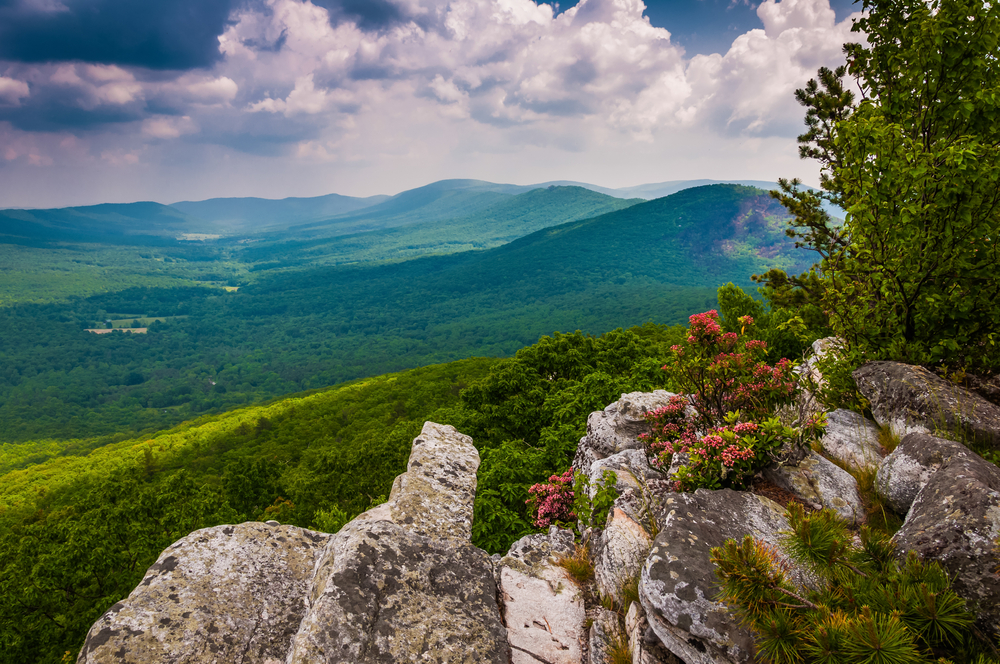
Listen to the latest Green Divas myEARTH360 Report: A lot of WTF stuff, including more fracking nonsense and nanotechnology in our food? Some sad news about polar bears, but of course, some encouraging news too. Then read on for more.
WTF?
This headline that included both “fracking” and “national forest” really got me riled up…
Fracking to be permitted in GW National Forest
As if that wasn’t enough to make me scream, “WTF?”… right beneath that disturbing headline was an ad “Support the Keystone XL pipeline and enhance U.S. energy efficiency.” (Fortunately, this was defeated in the Senate. Watch the Jon Stewart video mocking Democrats about it.)
Am I living in an alternate universe?
No. It’s reality. Oil and gas companies will be allowed to frack-up 167,000 acres in the George Washington National Forest. And before you can say, “How are you heating your house this winter, Green Diva Lynn?” I will tell you: Natural gas. It’s my only choice right now (no funds for solar panels or my own wind turbine). However… I sign as many anti-fracking/ pro- renewable energy petitions out there I can lay my fingers on. I do everything I can with my abilities (public speaking is, unfortunately, not one of them) to inform people about the downsides of fracking and other dirty energy and the need to move on to renewable, cleaner energy and how to take action for the earth. But I digress…
What the double F?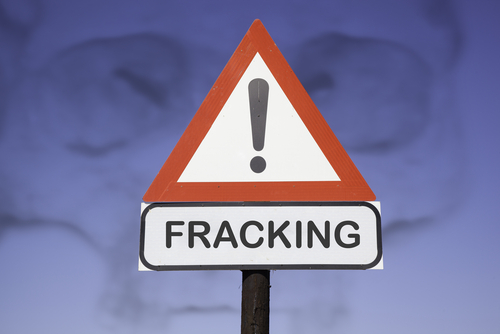
According to the article that came with the headline cited above, this plan “permits drilling only on 167,000 acres.” Only? And environmentalists were happy with what was apparently a “compromise.” Okay, I get it. It’s better than allowing fracking 168,000 of the 1.1 million acres that is the pristine George Washington National Forest, the largest American forest in the Eastern U.S.
The oil and gas companies aren’t going to stop drooling over the gargantuan underground deposit of natural gas that lies beneath half of the GW National Forest and would equate to $10 billion a year. Could be worse. Hooray. But it could be better as in, how about NO fracking in the forest?! That was almost the case.
The USFS (U.S. Forest Service) had initially proposed to ban fracking in the 1.1 million acre forest, the first outright ban of the practice in a national forest. But when the plan was released in 2011, energy companies complained and exerted pressure on the USFS. About 10,000 acres of the forest are already been leased to oil and gas companies, with private mineral rights existing under another 167,000 acres. The newly released plan will only allow fracking on that land, which is located in sparsely populated rural Highland County, Virginia. The plan also puts off limits another 800,000 acres that were available for drilling. ~ EcoWatch
There’s nothing worse than whining energy companies, I suppose. Throw them a bone to shut them up for a while. But what’s to stop the USFS from making further concessions down the fracking road when the 167,000 acres are tapped out? We know the oil and gas companies will continue to exert pressure to inch further into this and other forests and parks. And, unfortunately, we consumers will continue to consume natural gas until renewables become the norm. It’s a conundrum.
So, besides the fact that a national forest shouldn’t be marred by nasty-looking fracking wells, what’s wrong with fracking?
Here are just a few things to consider (and this is in no way meant to be a comprehensive research paper on the subject… just the highlights):
It’s bad for the air. A new study, published in the journal Environmental Health, identifies potentially hazardous concentrations of air pollutants near some oil and gas fracking operations in five states.
It’s potentially harmful to our drinking water. There’s also fracking wastewater, which contains harmful chemicals like barium, chromium, copper, mercury, arsenic and antimony, according to a recent peer-reviewed study at Rice University, and shouldn’t be allowed near drinking water.
Environmental groups fear the drilling would pollute mountain streams that directly provide drinking water to about 260,000 people in the Shenandoah Valley. Another 2.7 million people in Northern Virginia and Washington rely upon the forest for a portion of their water supply.
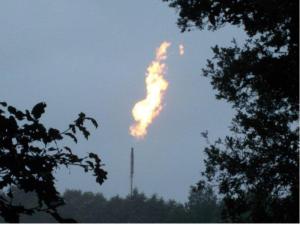
Methane. Bad fracking techniques can also leak methane flow into drinking water. So let’s hope good fracking techniques are used in the forest. Methane can also leak into the air—a study concluded that natural gas leakage rates were about 5.4 percent. Sounds like a small amount, but methane is the superfood of greenhouse gases, trapping 86 times as much heat as CO2 over a 20-year period. According to this study…
If the leakage rate were 5.4 percent, replacing a fleet of coal plants with gas plants would be worse for the climate for 5 decades. If the leakage rate were 7.6 percent, fracked gas is worse for a century!
Bottom line: National forests and parks are national treasures that should continue to be protected for future generations. We need more nature, not less. This forest fracking is f’d up. What say you?
Take action! Tell the EPA that we need national protection against methane pollution from the oil and gas industry.
Now for more WTF news!
(Don’t worry, encouraging news is on the way.)
Waste Water from Oil Fracking Injected into Clean Aquifers
State officials allowed oil and gas companies to pump nearly three billion gallons of waste water into underground aquifers that could have been used for drinking water or irrigation.
Those aquifers are supposed to be off-limits to that kind of activity, protected by the EPA.
Barely surviving: Alaska’s polar bear population falls 40% in 10 years
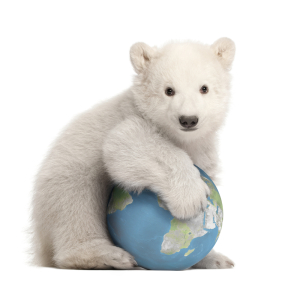 Polar bears are becoming an endangered species in Alaska, where their numbers have fallen by 40 percent in a decade, says a new study. Poor ice conditions linked to global warming, limiting access to their traditional prey, may be to blame.
Polar bears are becoming an endangered species in Alaska, where their numbers have fallen by 40 percent in a decade, says a new study. Poor ice conditions linked to global warming, limiting access to their traditional prey, may be to blame.
The number of polar bears in the southern Beaufort Sea near Alaska dropped to 900 in the period from 2001 to 2010, says the study, led by scientists from the US Geological Survey, as well as researchers from Canada and others from the US. The research appeared in the journal Ecological Applications, published by the Ecological Society of America (ESA).
The most drastic decline in the bear population was between 2004 and 2006 which led to 25-50 percent decline in abundance, says the research.
“Of the 80 cubs observed in Alaska from 2004 to 2007, only two are known to have survived,” said Jeff Bromaghin, USGS research statistician and lead author of the study.
Take action! Please sign the Polar Bears International petition to ask the world’s nations to create a plan for greenhouse gas reductions that are fast and deep enough to help polar bears—and, by extension, people.
Are We In Danger of a Groundwater Overdraft?
California is entering its fourth year of a record-breaking drought. Last year was the driest since the state started keeping records more than a hundred years ago. And yet, pay a visit to California’s Central Valley and out of that parched land you’ll see acre upon acre of corn, almond trees, pomegranates, tomatoes, grapes. And what makes them all possible: water. Where do you get water in a drought? You take it out of the savings account: groundwater. Watch the 60 Minutes report.
Only one in 10 Americans knows that over 90 percent of climate scientists have concluded that global warming is a human-made thing.
The latest public opinion study out of Yale’s Project on Climate Change Communication has all the usual hints of optimism we’ve seen in the Project’s many other climate reports. According to “Climate Change in the American Mind,” released this week, a majority of Americans support regulating carbon pollution from coal-fired power plants, funding research for renewable energy, yada, yada. But there’s also some chilly stuff in there:
- Only one in 10 Americans knows that over 90 percent of climate scientists have concluded that global warming is a human-made thing.
- Only 11 percent of Americans are “very” worried about climate change, despite the fact that global warming impacts have been increasingly hitting our coasts, homes, and wallets over the last decade.
- Only one in three even believes that climate change is happening right now — most see it as a relatively distant threat.
- What’s worse — and I blame Ezra Klein for this — few Americans are optimistic that humans will do anything about global warming. (I’m kidding. I don’t blame Ezra.)

Nanomaterials in Organic Food? The USDA Is Looking the Other Way
There are naturally occurring nanoparticles, such as smoke from wildfires, but engineered nanomaterials like can be added to foods, fruit and vegetable coatings, food packaging materials, supplements, and cosmetics. Titanium dioxide increases the whiteness of mints, milk, yogurt, and dairy substitutes. Nanomaterials are also used in chocolate, salad dressings, cereal, pasta, and other common foods. Unregulated and Labeling is not required. They’ve been shown to damage DNA, cause lesions on the liver and kidneys, and disrupt cellular functions. Read more…
Triclosan: Soap ingredient can trigger liver cancer in mice, warn scientists
Traces of triclosan, a synthetic compound not found in nature, have been found in the breast milk of up to 97 per cent of lactating women and the urine of three quarters of people tested, the researchers said.
It’s found in cosmetics, soaps, detergents, shampoos and toothpaste has been found to trigger liver cancer in laboratory mice. More reason to stay away from this stuff! Read more…
Big Pharma Cover Up: Hiding Significant Levels of Arsenic in Your Chicken
Until last year, small, yet significant levels of arsenic may have laced your chicken dinner, but Big Pharma really didn’t want you to know. And once again, industry influence over government prevailed over protecting public health.
In a classic case of the fox guarding the chicken coop, Alpharma, a former subsidiary of the major pharmaceutical company Pfizer, was recently found to be colluding with the Food and Drug Administration (FDA) behind closed doors to delay and downplay public release of important information about risks of one of its livestock drugs. Those closed doors have now been thrown wide open. Read more…
Encouraging News
Top Republican bows to scientists on climate change
For too long, the country’s debate on climate change has been stuck on whether the phenomenon is happening at all, or on whether humans are responsible for it. As a Post editorial noted Monday, Republicans are mostly to blame for this, and key GOP leaders still seem unwilling to move the discussion forward now that they have won control of Congress.
It is in this dismal context that comments from Sen. John Thune (R-S.D.) on Fox News Sunday offer a glimmer of hope that at least some Republicans aren’t comfortable with their party’s role in the debate. Read more…
Poop-powered airport shuttle bus hits the road in the U.K.
Hungry Planet: Can Big Data Help Feed 9 Billion Humans?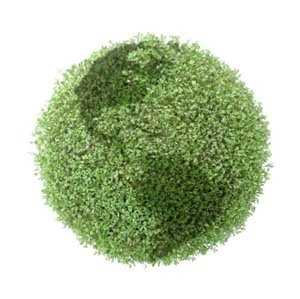
With a population set to hit 9 billion human beings by 2050, the world needs to grow more food —without cutting down forests and jungles, which are the climate’s huge lungs.
The solution, according to one soil management scientist, is Big Data.
Kenneth Cassman, an agronomist at the University of Nebraska, Lincoln, recently unveiled a new interactive mapping tool that shows in fine-grain detail where higher crop yields are possible on current arable land.
“By some estimates, 20 to 30 percent of greenhouse gas emissions are associated with agriculture and of that a large portion is due to conversion of natural systems like rainforests or grassland savannahs to crop production, agriculture,” Cassman told NBC News at a conference in suburban Seattle.
The only practical way to stop the conversion of wild lands to farmland is grow more food on land already dedicated to agriculture, he said. Currently, the amount of farmland used to produce rice, wheat, maize and soybean, he noted, is expanding at a rate of about 20 million acres a year. Read more…
Take action!
Bonus.
Listen to the latest full episode of The Green Divas Radio Show…
images via shutterstock.com unless otherwise noted.
[dynamic-sidebar id=’Custom Widget 2′]